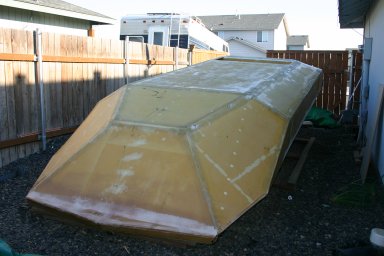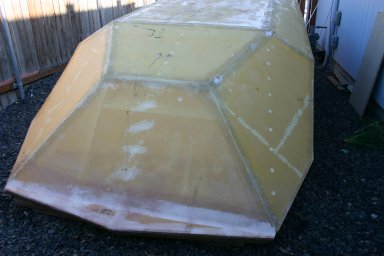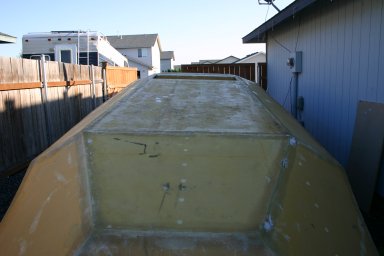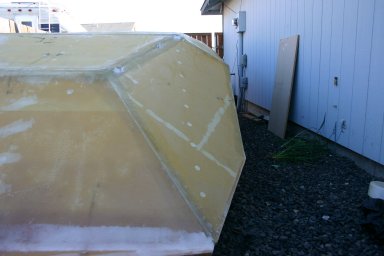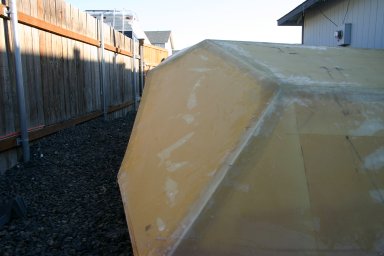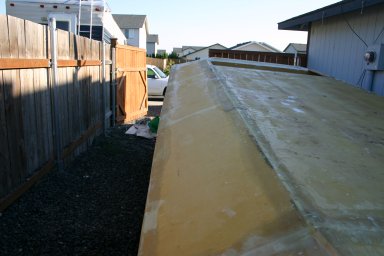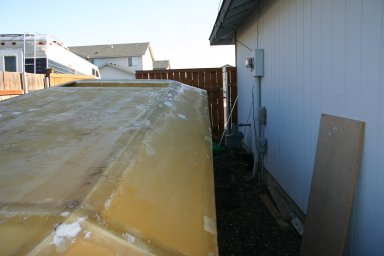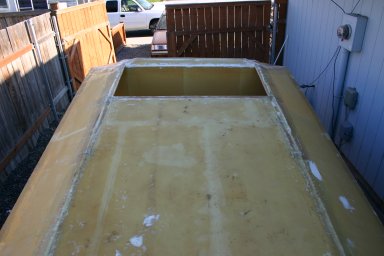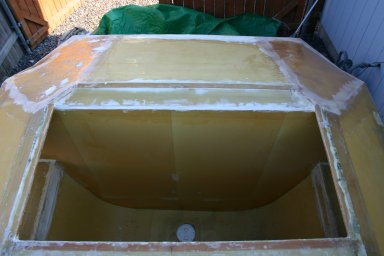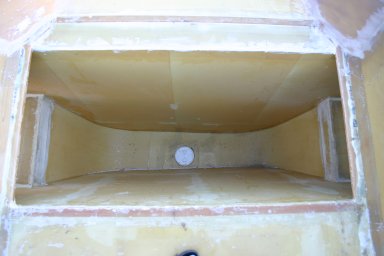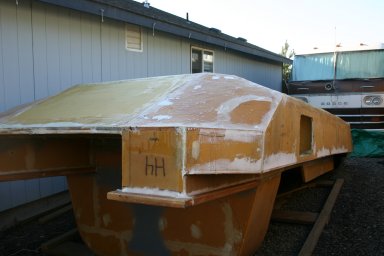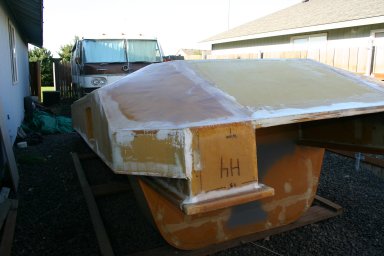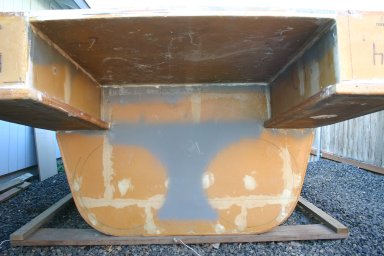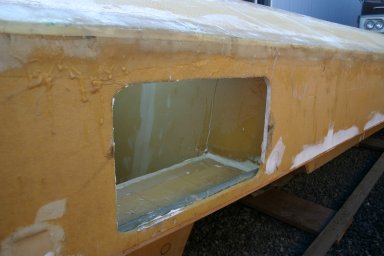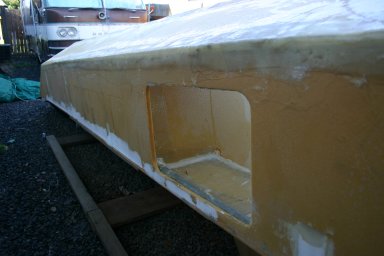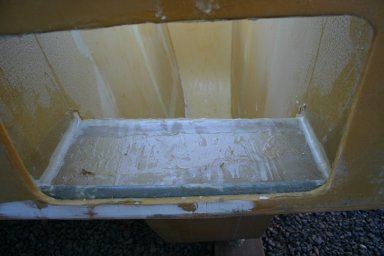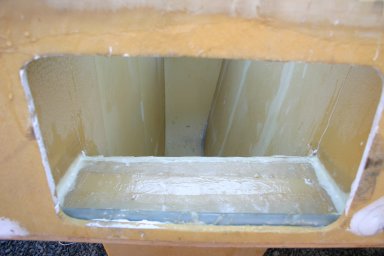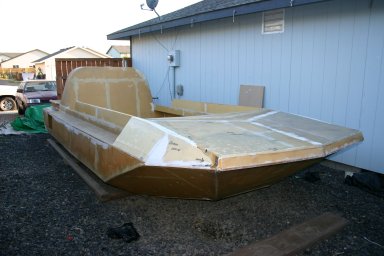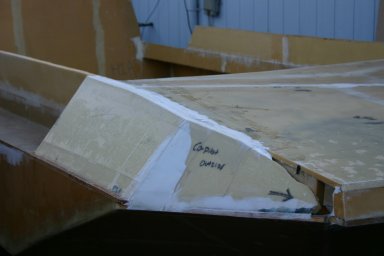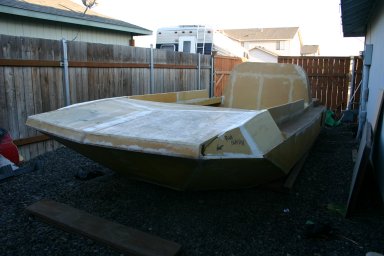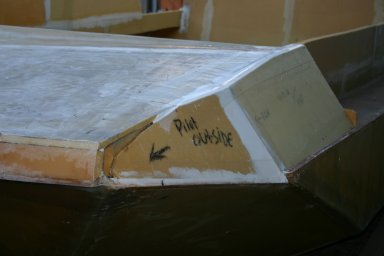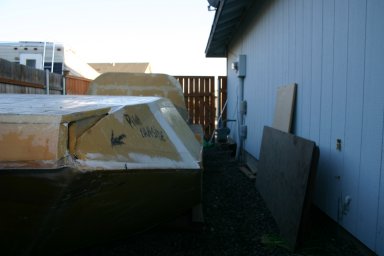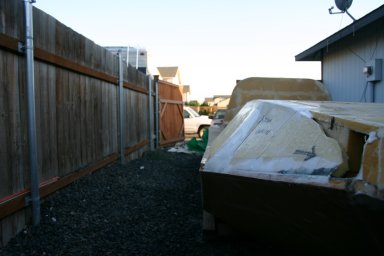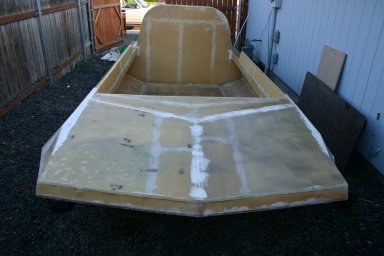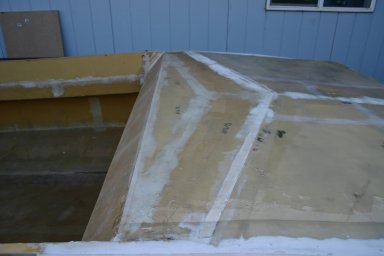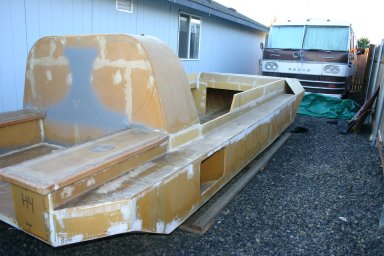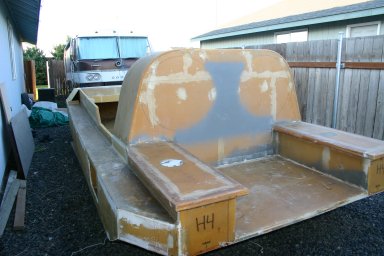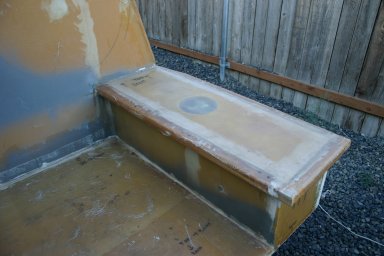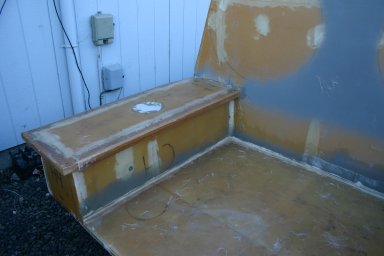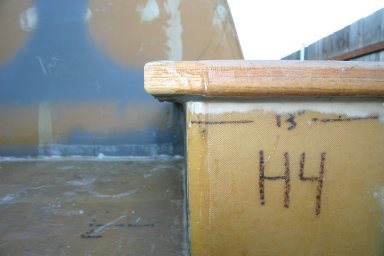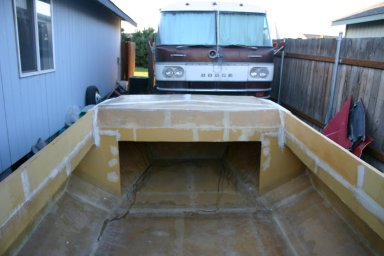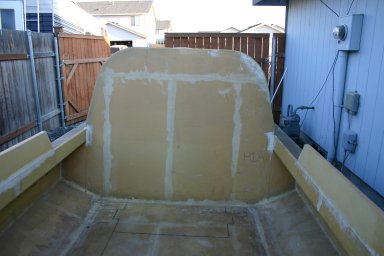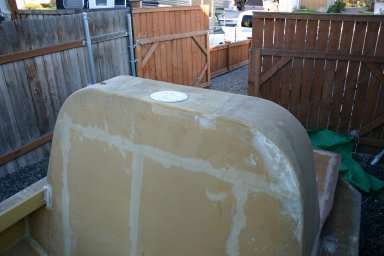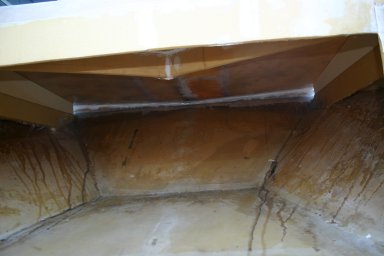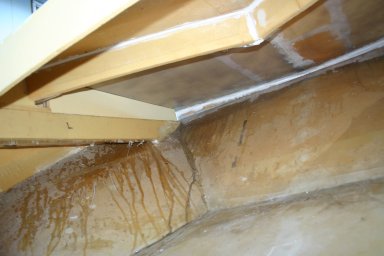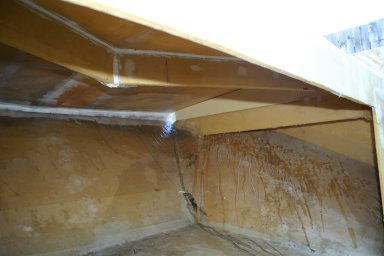Hull Pictures
(click on any picture to enlarge it)|
A note about these pictures: You'll notice the craft is outside in these pictures. Rest assured that this hull has not been exposed to the weather. It started life in an enclosed carport area, then moved into my enclosed garage. In the late fall of 2005 - less than a year ago as of this writing - the hull outgrew my garage due to the front extension being added. At this point it was necessary to move the hull outside. A heavy, canvas tarp was raised above the hull to protect it from sunlight. Lighter, plastic tarps were placed over the hull when not working on it, again to protect it from sunlight and any other weather that might come through. As fall progressed, the hull was flipped upside down in the configuration you see here. A sheet of wood was tacked over the fan bay with hot glue (to prevent the tarps from collapsing into it if we got much snow - turns out we got virtually none) and the hull was sealed with two layers of full length tarps: A large plastic tarp underneath to fully protect it from moisture and the thick canvas top on top to add further protection. Both tarps extended down both sides of the craft and were buttoned up underneath it. Additionally, the entrances to the lower bow area were sealed with thick plastic to prevent any animals from getting in and nesting, etc. As a result of my precautions, this craft has never been exposed to the weather. The tarps were removed for these photos, placed back on when complete, and photos were taken during the evening when the hull would be shaded from direct sunlight. This hull has always been extremely well protected as even short term exposure to UV rays will degrade the foam significantly and it should continue to be protected by it's new owner until it can be sealed appropriately (gel coat, sanding primer, paint, whatever combination of sealant you choose to use). |
